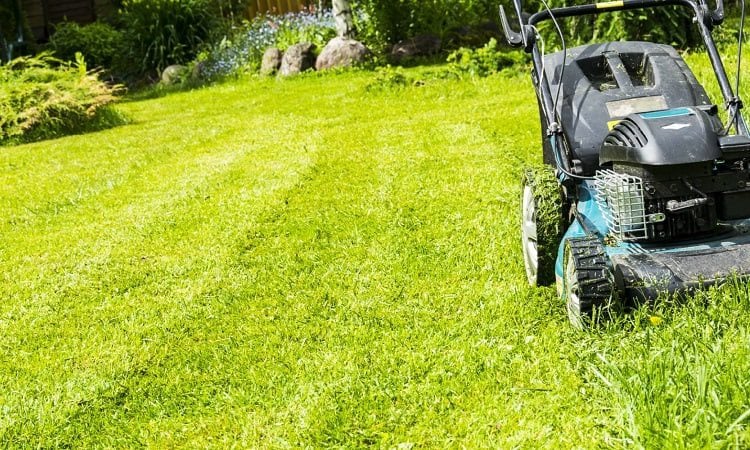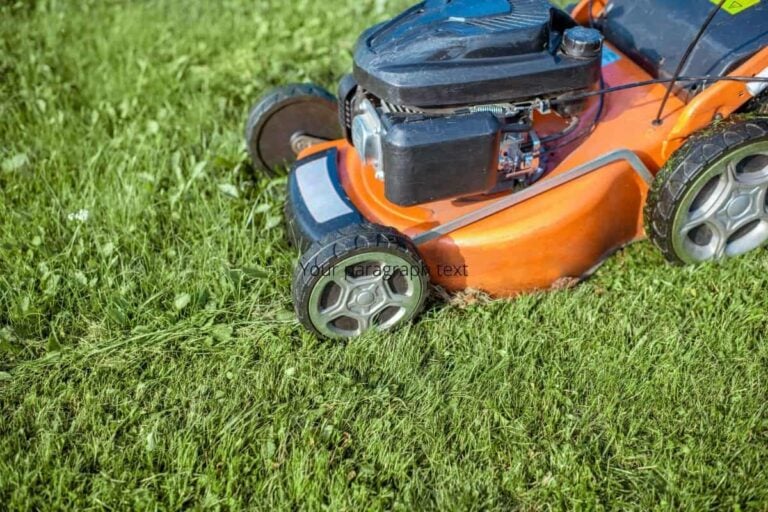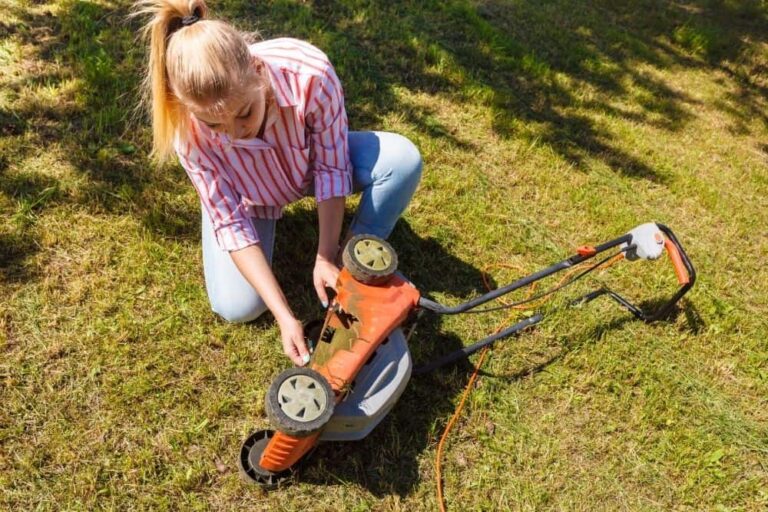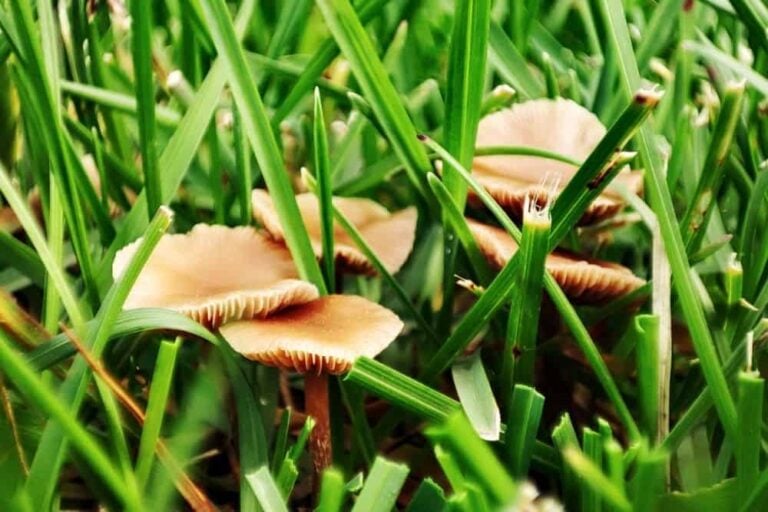Mowing Wet Grass: Everything You Should Know About It
Many lawn owners want an even and attractive view, and that’s why mowing comes in handy. However, careless mowing can create uneven surfaces that become a haven for the frogs and lizards.
Also, the penetrating voids are potential hazard risks in causing accidents and destroying the lawnmower.
It’s advisable to repair the lawn before mowing. Ideally, understanding the root cause of the uneven lawn is very important. For instance, natural disasters such as heavy downfalls can strain the surface and cause excessive drainage.
In such circumstances, leveling and grading come in handy. Some people also destroy the lawns while repairing drainage, making fences, or getting rid of rodents, frogs, and insects.
Nevertheless, mowing wet unleveled grass can be disastrous for the lawnmower and labor-intensive for the owner. This article offers a guide on everything you should know about mowing damp grass.
Can You Cut Wet Grass?
Yes, it is possible to cut the wet grass but not advisable to mow wet grass. Cutting the wet grass requires a highly powered mower to stand the friction and clump from the clogging turf grass.
Besides, cutting wet grass easily slips off, leading to an uneven cut. It is advisable to dry off the ground if the lawn is small and manageable to avoid all the costs involved with wet grass.
Reschedule the mowing sessions to fit periods with no rainfalls.
It allows the grass time to shed off extra weight and soften for the clean-cut. For a smaller yard, cover the grass during heavy rainfall seasons and allow only the topsoil to absorb water. In such circumstances, ensure the drainage is sufficient and well-coordinated.
Is It Bad to Mow Wet Grass?

It isn’t good to mow wet grass. Due to current technological advancement, many mowers are electrically powered, and mowing during wet seasons can cause electrical shock. Such shock is a health hazard to the owner and also the mower.
Again, wet grass easily slips off from the blade and thus resulting in an uneven lawn. Also, excessive moisture can contaminate the fuel in the tank that may drain the yard, destroying the turf grass’s normal flora.
Besides, the moisture can add content to the fuel tank and thus overstressing the machine to perform the task, which is a potential risk to mechanical breakdown. During wet seasons the turf grass clumps on the wheels and the mower engine, leading to blockages, which calls for more energy to get the work done.
Riding or pushing the underperforming mower is cumbersome and can overstrain the hands and legs muscles leading to prolonged aches or hospitalization.
It’s only the highly powered mowers that can give a clean-cut during the wet season. Otherwise, the mower will likely create much friction leading to uneven shred and destroyed lawn. Again, damp grass takes time and energy to clean up in comparison to dry seasons.
The damp grass sticks to anything, and it’s a breeding ground for frogs and molds that is hazardous for the family and the domestic animals. The freshly cut chlorophyll stains may take time, money, and energy to clean up.
The strained wet mower requires an immediate clean up with much water and non-sticky detergents. It adds to the number of resources and energy necessary for a complete clean compared to the dry seasons.
Thus, it isn’t nice to mow the wet grass for the reasons above. If mowing is a must, then take protective measures to avoid accidents and damage to the mower. In such circumstances, invest in a highly powered mower that stands the inefficiencies of the wet season.
Dangers of Mowing Wet Grass
Mowing wet grass poses much danger for the mower and also the individual pushing it. A further breakdown of these dangers is mentioned below.
For your lawnmower
A lawnmower is delicate as any other machine, and thus, mowing in wet weather compromises its quality and workability. Wet grass can exert detrimental damage on the lawnmower and cause the device to collapse.
The clippings and clogs from heavy and damp grass can contaminate the gas resulting in another combination that reduces friction in the engine creating damage.
Also, the friction involved when mowing wet grass is different from dry grass, and thus, the lawnmower is likely to overheat or shock from the excessive pressure.
In most cases mowing in damp weather requires frequent cleaning and unclogging that may compromise lawn mower parts. The scrapping can loosen the nuts and cause damage to the blades.
Wet grass increases the bluntness in the blades that strains the wheels during the pulling and pushing elements. In such circumstances, other components of the lawnmower may malfunction or get destroyed. Also, wet grasses add on the stains, which erode the surfaces and lead to a loss.
For your lawn
Mowing wet grass can damage the lawn in many ways. First, the wet lawn may soften and pluck off, creating depression and uneven distribution. Also, mowing a wet lawn exposes the grass to bacteria and fungi, contaminating the yard’s quality.
Wet grass slips off the lawn and escapes the cut leading to the unlevelled ground. In such circumstances, depression creates a safe environment for rodents, frogs, and insects. Frogs are noisy and emit poisonous toxins that can contaminate the lawn, water, and spread diseases in the homestead.
How to Know If Your Grass is Too Wet for Mowing?

It is understandable to mow the grass during rainy seasons since they tend to grow long and healthy. However, too wet is not conducive for cutting, and the best option is to allow the water to shed off a little before mowing.
The surest method to know if the grass is too wet for mowing is through testing the blades. If they clumps and probably fall on the ground, it means the grass is too heavy to allow spinning, and thus, mowing is unsuccessful.
Also, too wet grass tends to lie on the ground because of weight, and it’s normal for the mower to miss out. It is recommended to wait for the grass to shed off the excess water for the blades’ health in such cases. However, expect the following consequences for mowing wet grass.
- Grass fungal disease – Mainly wet grass causes an uneven cut, which increases the chances of the grass to contract the fungus. Remember, most ailments are on the air, and an unleveled lawn creates safe havens for rodents and frogs, thus increasing bacteria and fungi in the compound. Heavy wet grass causes grass clippings that lump together, making room temperature for bacteria and fungi’ growth. Kids or pets can transfer such disease-causing agents to the house.
- As mentioned above, wet grass creates uneven cuts due to some slipping off the blades. Thus, the resulting lawn is rugged and unattractive.
- Rainy season wet and softens the ground, and it becomes easy to pull and pluck weed from the root, so the mower may pluck off the grass rather than trimming. In such circumstances, the mower may damage because of overworking.
- There are no smooth operations when mowing wet grass since it gets sticky and may block the blades from functioning. If the mower is not working correctly, rest in between rows to clear the grass and clean the blade, which is time tasking and energy-consuming.
- The grass is in rich chlorophyll color that stains clothes and boots during mowing. So the wet grass clipping stains and clings on the clothes creating a whole set of mess.
How to Mow It If You Really Need It?
Mowing wet grass is a possible health hazard for the mower and the individual. However, if mowing is necessary, ensure to have the following aspects ready for a smooth transition.
- Put aside lean freshwater for deep cleaning the lawn after use.
- Put aside a scrubbing brush and a detergent for removing grain stains and coloring from the deck and the blades.
- Have an alternative mower that uses electricity and gas to alternate incase the mower is wholly clogged or overheating.
- Have a power guard for the electrical mower to safeguard its component from shock accelerated by the wet grass.
- Have vinegar/salt to treat off the mulch to accelerate its drying off, depending on your specifications.
- Purchase a stabilizer to control the amount of fuel in the mower.
- Have sharper and necessary tools for unclogging the blades and the deck.
The initial mowing process is the preparation
- Start by sharpening the blades aiming for a clear and clean-cut. Sharpened blades work perfectly at shredding off the grass and leaving mulch, which is manageable.
- Plan the mowing process before starting on the wet grass. Planning begins by reducing the frequency of mowing to prevent the grass from overgrowing. Tallgrass causes clogs and turns the process labor-intensive.
- Used raised mower deck to reduce the stout grass stalks. Remember, grass stalks are plump with water, which exerts more pressure on the blades.
- Before starting, ensure the mower is up for the task by checking its condition. Using an electrical mower increases the chances of shock due to water. Also, water can contaminate the mower and release the contaminated substances into the lawn. Such chemicals can degrade the health of the yard.
How to mow wet grass
- Wet grass is heavy and hugely damages the lawnmower. It’s possible to control the impact of the wet clippings by;
- Opting for side discharge- mulching wet grass is cumbersome and tends to clump on the deck. Thus, it’s advisable to side discharge the mulch and deter heavy clumps from lying on the heavy grass.
- Shut off the mower and clean it before moving to the next row. Wet grass creates glue-like substances that clog the blades and the mower deck. So switch off the mower and allow the blades to stop as you clean the grass clippings using gloves. Doing this frequently will keep the mower clean.
After the mowing exercise, carry out the following processes to clean the lawn clean and grass healthy.
- Thoroughly clean the deck using clean water to get off the grass.
- Rake the clippings from the yard and spread the leftover to accelerate drying off and protect the lawn. Spreading over the wet grass will help them dry and decrease the chances of destroying the lawnmower.
Conclusion
Mowing grass is the surest method of getting rid of frogs in the compound. The process can be tasking if the grass is wet and heavy. It can strain the lawnmower and the lawn, causing depressions and also overheating or complete breakdown.
Thus, it’s imperative to plan before settling on mowing the wet grass. Sometimes it’s advisable to wait for the water to dry off or wetness to subsidize.
For small yards, it’s advisable to reduce the wetness by covering the grass during heavy downfalls. But if mowing is the only way forward, carryout essential processes to keep the lawnmower healthy and secure.
First, prepare the blades by sharpening, and second do not mulch the wet grass since it can clog on the blades, causing bluntness and breakdown. Also, clean the blades and deck frequently after mowing every row to unclog its surfaces.
Wait for the grass to dry off or shed off excess water before starting the lawnmower. Keep the gas away from the moisture by fueling the necessary amount for the specific period.
Do not overwork the mower above its tensile strength. Remember, excessive pressure will damage the lawn and the mower, and thus, take the mow sparingly.


![Best String Trimmer Reviews of [year]](https://properlyrooted.com/wp-content/uploads/2022/10/best-string-trimmer-reviews.png)



